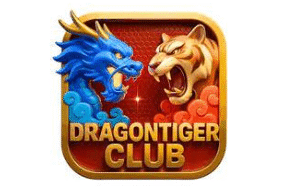
Tiger Dragon: A Fascinating Dive into Mythology
The phrase “Tiger Dragon” evokes a sense of mystery, power, and intrigue. Across cultures, these two majestic creatures have been celebrated for their unique qualities and symbolic significance. Whether in mythology, art, martial arts, or even casino gaming, the combination of tiger and dragon resonates deeply with people worldwide. In this article, we will explore the rich history, cultural importance, and modern-day relevance of Tiger Dragon , offering a comprehensive look at why this pairing continues to captivate audiences. Our main focus keyword is Tiger Dragon , and we aim to provide an SEO-optimized, informative, and engaging piece.

The Mythological Significance of Tiger Dragon
In many ancient cultures, the tiger and dragon are revered as powerful symbols of strength, balance, and duality. Together, they form a dynamic duo that represents the harmony of opposing forces. Let’s delve into the mythological roots of Tiger Dragon across different civilizations.
1. Chinese Mythology
In Chinese culture, the dragon is a symbol of imperial power, wisdom, and good fortune. It is often associated with water, rain, and the sky, embodying yang energy—masculine, active, and fiery. On the other hand, the tiger is seen as the king of beasts, representing courage, protection, and earthly power. It embodies yin energy—feminine, passive, and grounded. Together, the Tiger Dragon pairing symbolizes the perfect balance between heaven and earth, fire and water, and action and stillness.
This duality is often depicted in traditional Chinese art, where the dragon and tiger are shown facing each other or intertwined. Such imagery is believed to bring harmony and prosperity to those who display it.
2. Korean Folklore
In Korea, the tiger holds a special place in folklore as a guardian spirit and protector against evil forces. Meanwhile, the dragon is viewed as a benevolent creature that brings rain and fertility to the land. The juxtaposition of these two beings in Korean stories reflects the constant struggle between chaos and order, wild nature and divine intervention.
3. Hindu and Buddhist Traditions
While dragons are not prominent in Indian mythology, tigers play a significant role in both Hindu and Buddhist traditions. Tigers are often associated with deities like Durga, the goddess of war and strength, and Shiva, the destroyer and transformer. When combined with the idea of dragons from neighboring cultures, the concept of Tiger Dragon emerges as a fusion of raw power and spiritual enlightenment.

The Symbolism of Tiger Dragon in Art and Design
Throughout history, the Tiger Dragon motif has inspired countless works of art, architecture, and design. Its symbolism transcends mere aesthetics, conveying deeper meanings about life, nature, and human aspirations.
1. Visual Representation
In visual art, the tiger and dragon are frequently portrayed in combat, symbolizing the eternal struggle between opposing forces. This theme can be found in paintings, sculptures, and even tattoos. For instance, traditional Chinese brush paintings often depict a dragon soaring above a tiger, emphasizing their complementary yet contrasting natures.
2. Feng Shui and Decor
In feng shui, the Tiger Dragon combination is used to create balance and harmony in living spaces. The dragon is placed on the left side (yang) of a room, while the tiger occupies the right side (yin). This arrangement is believed to attract positive energy, protect against negative influences, and promote overall well-being.
3. Tattoos and Body Art
Tattoo enthusiasts around the world embrace the Tiger Dragon design as a symbol of inner strength, resilience, and transformation. These tattoos often feature intricate details, blending the fierce attributes of the tiger with the mystical qualities of the dragon. Each tattoo tells a unique story, reflecting the wearer’s personal journey and aspirations.
Tiger Dragon in Martial Arts and Philosophy
The influence of Tiger Dragon extends beyond mythology and art into the realm of martial arts and philosophy. Many fighting styles draw inspiration from the characteristics of these two creatures, using their traits to enhance physical techniques and mental discipline.
1. Kung Fu Styles
In Chinese kung fu, the tiger and dragon are two of the five animal styles, alongside the crane, leopard, and snake. The tiger style emphasizes brute force, aggression, and direct attacks, while the dragon style focuses on fluidity, adaptability, and strategic thinking. Practitioners of Shaolin kung fu often combine elements of both styles to achieve mastery over body and mind.
2. Tai Chi and Qi Gong
Tai chi and qi gong practitioners also incorporate the principles of Tiger Dragon into their routines. Movements inspired by the tiger cultivate grounding and stability, while those inspired by the dragon encourage flexibility and flow. By balancing these energies, students can improve their physical health and spiritual awareness.
3. Philosophical Lessons
The Tiger Dragon dichotomy serves as a metaphor for life’s challenges and opportunities. Like the tiger, we must harness our inner strength to face adversity head-on. At the same time, we should emulate the dragon’s wisdom and adaptability to navigate complex situations. This dual approach fosters personal growth and resilience.

Tiger Dragon in Modern Pop Culture
The allure of Tiger Dragon has not diminished in modern times; instead, it has evolved to fit contemporary contexts. From movies and video games to fashion and literature, the tiger and dragon continue to inspire creativity and innovation.
1. Cinema and Television
Films such as Crouching Tiger, Hidden Dragon (2000) showcase the timeless appeal of Tiger Dragon themes. The movie explores the interplay between passion and restraint, freedom and duty, through its characters and narrative. Similarly, animated series like Avatar: The Last Airbender feature tiger-dragon hybrids as powerful symbols of unity and transformation.
2. Video Games
Video game developers often use Tiger Dragon motifs to create compelling characters and worlds. Games like Tekken , Street Fighter , and World of Warcraft include characters inspired by these mythical creatures, allowing players to experience their legendary powers firsthand.
3. Fashion and Accessories
High-end fashion brands have embraced the Tiger Dragon aesthetic, incorporating its bold and striking elements into clothing, jewelry, and accessories. Designers use vibrant colors, intricate patterns, and luxurious materials to capture the essence of these iconic figures.
Tiger Dragon in Casino Gaming
One of the most intriguing modern interpretations of Tiger Dragon is its presence in casino gaming. Known as “Dragon Tiger,” this card game has gained immense popularity in Asia and beyond, offering a simple yet thrilling experience for players.
1. How to Play Dragon Tiger
Dragon Tiger is a fast-paced card game played with a standard deck. Players bet on whether the Dragon or Tiger hand will receive the higher card. A third option, Tie, allows players to wager on both hands having equal values. With straightforward rules and quick rounds, Dragon Tiger appeals to both casual and serious gamblers.
2. Why Tiger Dragon Gaming is So Popular
The simplicity of Dragon Tiger makes it accessible to beginners, while its unpredictability keeps seasoned players engaged. Additionally, the name itself—Tiger Dragon —conjures images of excitement and adventure, drawing players into the game’s immersive atmosphere.
3. Online Platforms and Accessibility
Thanks to online casinos, Tiger Dragon gaming has reached a global audience. Players can enjoy the game from anywhere, anytime, making it more convenient than ever to participate in this exhilarating pastime.
The Enduring Legacy of Tiger Dragon
From ancient myths to modern entertainment, the legacy of Tiger Dragon remains as strong as ever. Its enduring appeal lies in its ability to transcend cultural boundaries and resonate with universal themes of balance, strength, and transformation. Whether you encounter Tiger Dragon in a work of art, a martial arts dojo, or a casino table, you are sure to be captivated by its timeless charm.
By understanding the historical, cultural, and symbolic significance of Tiger Dragon , we gain a deeper appreciation for its impact on human imagination and creativity. As we move forward, this iconic pairing will undoubtedly continue to inspire new generations, reminding us of the beauty and complexity of the world around us.
Conclusion: Embrace the Power of Tiger Dragon
In conclusion, Tiger Dragon is much more than a simple combination of two animals—it is a profound representation of balance, duality, and harmony. Whether you are exploring its mythological origins, admiring its artistic expressions, practicing its philosophies, or enjoying its presence in gaming, Tiger Dragon offers endless opportunities for discovery and inspiration.

